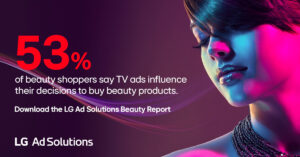By Stefan Lederer, CEO of Bitmovin
Last year, we saw the initial impact of an uncertain economy and the cost of living crisis alter people’s streaming subscription habits, with cost and value for money at the forefront of most decisions. Netflix’s subscriber numbers yo-yoed from huge losses to huge increases and the successful introduction of their ad-based video on-demand (AVOD) service saw other streaming giants look at different ways to keep hold of their subscribers.
Our recent research also revealed that developers are increasingly working on FAST – free ad-supported television – monetisation models following its increase in popularity amongst consumers as a free way to consume content. With the volatile streaming world continuing to change and evolve, what streaming model really is the best?
SVOD versus AVOD
The two most common streaming models are subscription video on-demand (SVOD) and ad-based video on-demand (AVOD). The main difference between the two is the SVOD model incurs a cost and the AVOD model is more often free or cheaper than SVOD. Over the last few years, we have seen widespread adoption of both, particularly when the often fickle viewers have to choose between the latest series they would like to binge-watch and whether to cut back on subscription costs.
There are upsides and downsides to both, depending on what the viewer wants to prioritise. The benefits of the SVOD model is that often there will be a better user experience with less ad interruption, more on-demand content and it also works well for new media streaming e.g. home workout subscriptions. The downfall of SVOD is that subscription prices are subject to change and are increasingly becoming more expensive, with Netflix recently announcing its future clamp down on password sharing to drive more people towards subscribing.
For AVOD, the standout benefit is that it is often far cheaper than SVOD. More and more people are making the move from SVOD to AVOD to save money and, with advertising increasingly becoming more tailored to the viewer, adverts don’t seem to bother as many people as they used to. However, some people would rather pay to have no ads than pay a little less and have ads, with our research revealing nearly 60% of those surveyed would purchase a subscription fee to remove ads.
A very FAST adoption
In response to the changing trends in streaming habits, the adoption of free ad supported television (FASTs) has grown exponentially. Recent research has found FAST penetration among households has more than doubled year-over-year. Six out of 10 households who have connected TVs are using FAST services exclusively or in addition to other services.
Unlike AVOD, FASTs operate like traditional linear TV that combines the comfort of traditional broadcast within the streaming landscape. The recent rise in FASTs takes us full circle back to linear, passive and ad-supported channels.
The hybrid safety net
With AVOD, SVOD and FAST streaming services all in competition with each other to keep hold of their subscribers, we are now seeing the rise of HVOD services – hybrid video on-demand. HVOD is where a streaming brand offers a variety of different services on the same platform. Recent research revealed that global SVOD subscriptions are predicted to increase by 428 million between 2022 and 2028 to reach 1.76 billion, driven by the hybrid of SVOD-AVOD tiers.
Streaming giants like Netflix, Disney+ and Rakuten TV are broadening their services by offering a hybrid of AVOD and SVOD to widen their subscriber net. HVOD will increasingly become the most used model as the streaming wars wage on and the competition for subscribers heightens.
It’s hard to determine what the ‘best’ individual monetisation model is as it often depends on the context of what is being viewed, for example, fitness companies like Peloton usually work best with an SVOD model and a FAST model would not make sense. However, we are likely to see more changes throughout the rest of the year, like Netflix’s teaser of an introduction to ‘FAST’ in January, proving monetisation models are still evolving in line with consumer demand.









